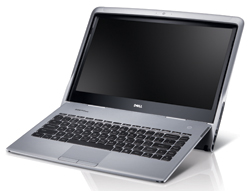New ultra-thin laptops ready to catch on?

Ultra-thin laptops make a lot of sense. In contrast to netbooks, these are "real laptops" with sufficient performance to handle all but the most demanding tasks and (in most cases) slightly larger displays. Though they can start at about the same price as many mainstream 15-inch models, ultra-thin laptops are much more portable and the slim designs look great. All of this is why it is puzzling that this new category has gotten off to a slow start (while netbooks continue to grow). Now computer companies are hoping to jump-start things with new models.

The Adamo XPS won't ship until December 22, and I haven't seen any full reviews yet, but here are links to some hands-on coverage:
Because of its price, the Adamo XPS competes not with low-cost ultra-thins, but with other premium models that use similar low-voltage processors such as the Apple MacBook Air, HP Envy 13 and Lenovo ThinkPad X301. The HP Envy is bigger and heavier than the Adamo XPS--at 0.8 inches thick and 3.7 pounds--but it is still highly portable by laptop standards. It starts at $100 less with a 13.1-inch display, 1.86GHz Core 2 Duo SL9400, 3GB of memory, ATI Radeon HD 4330 graphics with 512MB and a 250GB hard drive. The SL9400 is a low-voltage processor, not an ultra low-voltage chip (it is rated at 17 watts, rather than 10 watts), but the Envy 13 still posted solid battery scores in most reviews.
HP Envy 13 reviews:
Dell does have a low-cost ultra-thin laptop, though. The Inspiron 11z, an 11.6-inch model that is only about an inch thick and starts at $400 with a 1.30GHz Intel Celeron M 743, a single-core ULV processor. At that price and size, it is competing with netbooks as much as it is with other low-cost ultra-thins and mainstream laptops.
HP's latest low-cost model is the Pavilion dm3 series. Based on a 13.3-inch display, this ultra-thin laptop is available with low-voltage processors from either AMD or Intel. The dm3z starts at $530 with a 1.60GHz AMD Athlon Neo MV-40 dual-core processor, 2GB of memory, ATI Radeon HD 3200 graphics and a 160GB hard drive. The dm3t currently starts at $600 with a 1.20GHz Intel Celeron SU2300 dual-core processor, 2GB of memory and a 250GB hard drive.
HP Pavilion dm3 reviews:
Lenovo has two new ultra-thin models that use Intel's ULV chips: the IdeaPad U150 with an 11.6-inch display and the IdeaPad U550 with a 15.4-inch display. The company already sells 13.3-inch (IdeaPad U350) and 14.0-inch (U450) ULV laptops as well, giving it a complete line of ultra-thins like Acer's Aspire Timeline series and MSI's X Series. All of the IdeaPads are an inch thick or less, and starting prices range $550 for the IdeaPad U450 to $680 for the Idea U550. The IdeaPad U150, a competitor to the Dell Inspiron 11z, starts at $649 with a 1.30GHz Intel Pentium SU4100 dual-core processor, 3GB of memory and a 250GB hard drive. The IdeaPad U350, which goes head-to-head with HP's Pavilion dm3 series, starts at $599 with a 1.40GHz Core 2 Solo SU3500 single-core processor, 4GB of memory and a 320GB hard drive. With its larger display, the IdeaPad U550 is more like a mainstream laptop--complete with a built-in DVD drive--but it is thinner and lighter. It competes with larger ULV laptops such as the Acer Aspire 5810 Timeline and MSI X600.
Toshiba has been pumping out ultra-thins laptops such as the Portege R series for years, but these are higher-priced executive notebooks along the lines of the ThinkPad X301. The Satellite T100 series, by contrast, fits squarely in the low-cost ultra-thin camp. There are two models. The Satellite T115 in an 11.6-inch laptop starting at $450 with the 1.30GHz Intel Celeron M 743 single-core processor, 2GB of memory and a 250GB hard drive. That puts it somewhere between the Inspiron 11z, which is $50 less but has a smaller hard drive, and the IdeaPad U150, which costs more but has a faster processor and more memory. The Satellite T135 is a 13.3-inch models that competes with the Pavilion dm3 series, IdeaPad U330 and others. It starts at $600 with a 1.30GHz Pentium SU2700 single-core processor, 3GB of memory and a 250GB hard drive.
Toshiba Satellite T135 reviews:
Setting aside the Adamo XPS and HP Envy 13, which carry relatively high price tags, these new ultra-thin models should appeal to anyone looking for a laptop at a mainstream price but in a much more portable package. Low cost ultra-thins could finally be ready to catch on.